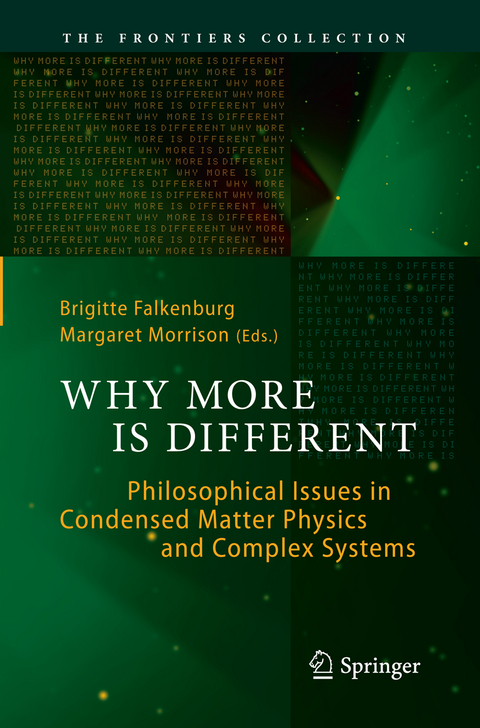
Why More Is Different
Springer Berlin (Verlag)
978-3-662-52309-4 (ISBN)
Prof. Brigitte Falkenburg TU Dortmund, Germany Prof. Margaret Morrison University of Toronto, Canada.
Introduction (B. Falkenburg, M. Morrison).- Reduction: On the Success and Limitations of Reductionism in Physics (H. Meyer-Ortmanns).- On the Relation between the Second Law of Thermodynamics and Classical and Quantum Mechanics (B. Drossel).- Dissipation in Quantum Mechanical Systems - Where is the System and Where is the Reservoir? (J. Ankerhold).- Explanation via Microreduction - One the Role of Scale Separation for Quantitative Modelling (R. Hillerbrand).- Emergence: Why is More Different? (M. Morrison).- Autonomy and Scales (R. Battermann).- More is Different...Sometimes: Ising Models, Emergence, and Undecidability (P. Humphreys).- Functional Reduction and Emergence (S. Bangu).- Parts and Wholes:.- Stability, Energence and Part-Whole Reduction (A. Hüttemann, R. Kühm, O. Terzidis).- Between Rigor and Reality: Many-Body Models in Condensed Matter Physics (A. Gelfert).- How Do Quasi-Particles Exist? (B. Falkenburg).- A Mechanistic Reading of Quantum Laser Theory (M. Kuhlmann).
| Erscheinungsdatum | 14.10.2016 |
|---|---|
| Reihe/Serie | The Frontiers Collection |
| Zusatzinfo | X, 280 p. 21 illus. |
| Verlagsort | Berlin |
| Sprache | englisch |
| Maße | 155 x 235 mm |
| Themenwelt | Naturwissenschaften ► Physik / Astronomie ► Atom- / Kern- / Molekularphysik |
| Naturwissenschaften ► Physik / Astronomie ► Thermodynamik | |
| Schlagworte | Complexity in Condensed Matter • Complex Systems • Condensed matter physics • Construction of Many Body Models • Dynamics and statics • History and Philosophical Foundations of Physics • History of Science • materials / states of matter • Microreductionist Descriptions • Multi-scale Models • Ontological Aspects of Emergence • philosophy of science • Physics • Physics and Astronomy • Reality of Quasi-Particles • Reduction and Emergence in Condensed Matter • Scale Separation • Statistical Physics • Statistical Physics and Dynamical Systems |
| ISBN-10 | 3-662-52309-4 / 3662523094 |
| ISBN-13 | 978-3-662-52309-4 / 9783662523094 |
| Zustand | Neuware |
| Haben Sie eine Frage zum Produkt? |
aus dem Bereich


